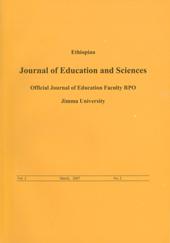Communication for Collaboration and Coordination among Actors of the University-based Grade 12 National Examination Management: Effectiveness and Challenges
Main Article Content
Abstract
The first university-based grade 12 national examination approach experimented in 2022 could have been effective if communication of actors engaged in the process was managed for better collaboration and coordination. This study, framed by Systems Theory, adopted the qualitative survey research methods and examined effectiveness and challenges of communication for collaboration and coordination among key stakeholders. Stakeholders participated in the administration of the 2022 university-based examination management were taken as population. Of these, 63 purposively selected top officials of universities and regional states/city administrations education bureaus, assessment experts, invigilators, supervisors and examinees were interviewed. In addition, evdences were collected from examination management guidelines, reports, and press releases. The data were transcribed, translated into English and thematically analyzed. The findings revealed that various communication tools were used: guideline was prepared and circulated, directives were communicated electronically and in hard copies, press statements and interviews were released, and mediated and face-to-face meetings were held. However, false information and rumors were circulating. Although efforts were made to curb them, addressees were not convinced. Despite the stakeholders’ readiness for collaboration and commitment to the approach, ineffective communication hampered their engagement and coordination. The communications were not smooth, timely, consistent and clear. Moreover, the methods employed did not take into account the stakeholders’ peculiarities, diverse backgrounds and interests. All of these influenced the new examination management negatively. Consequently, students and their parents were negatively affected. The implications of these phenomena are discussed and suggestions for future improvement of the approach are forwarded.
Article Details
Ethiopian Journal of Education and Sciences. All rights reserved.

